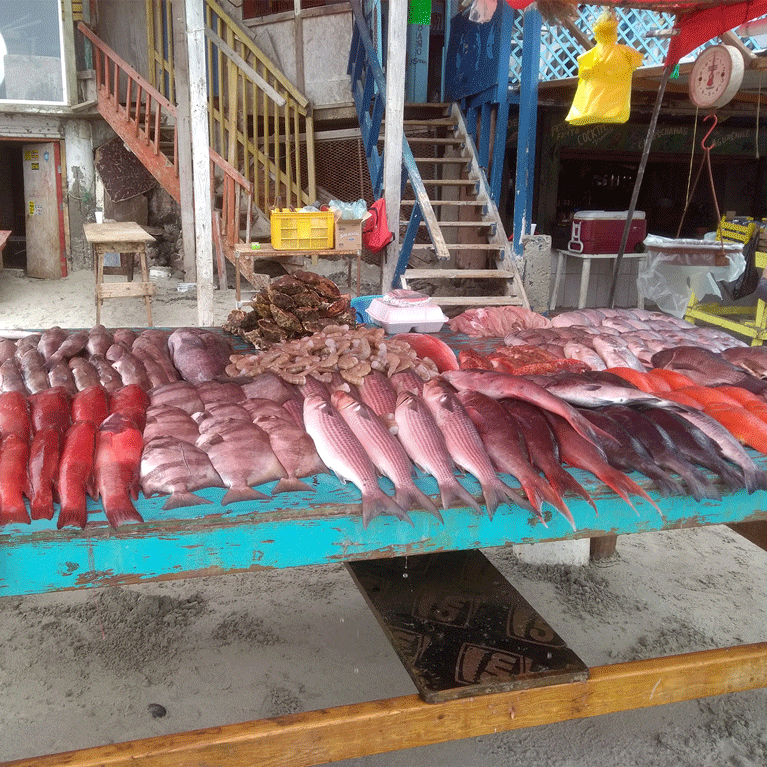Catch-up: Mexico’s shark fisheries
Popotla, the northernmost fishing camp on the Mexican Pacific coast, is where rarer species like prickly sharks and chimaeras are caught. Luz is monitoring catch sites and interviewing fishers to improve our understanding of how this artisanal shark fishery operates.
I’m a biologist working with sharks, rays, skates and chimaeras, otherwise known as cartilaginous fishes. I grew up reading books about marine wildlife, swimming in the sea and spending hours in intertidal pools watching invertebrates and small fishes. The next logical step for me was to study to be a biologist and during my studies I found myself captivated by cartilaginous fishes. For economic and personal reasons, I couldn’t work directly with these species, but one day I took all the money I had saved for years to study a PhD in marine ecology – the best decision I ever...



Description of artisanal chondrichthyan fishery in the northern limit of Mexican Pacific coast
To describe the catch of the artisanal chondrichthyan fishery at Popotla, with an emphasis in the prickly sharks and chimaeras, to improve the knowledge of these taxa and to create information needed to understand their interaction with the fishery.
The Mexican Pacific Northwest is the most important region for chondrichthyans fisheries in Mexico, an artisanal multi-specific fishery with high socio-economic value. Lack of basic data like species composition of the landings, biological data, and fishing effort have not allowed the assessment of the status of most species, including little-known species like Prickly shark and Chimaeras. These species are relatively common in landings at Popotla, Baja California, Mexico. Prickly shark is listed as “Near Threatened” by the IUCN for a possible vulnerability to fishing activities, which not include Mexican landings. Data regarding population status of Chimaeras, along with their trends and interaction with fishing activities, are unknown, with a high proportion of species being listed as “Data Deficient.” The monitoring and collection of data of these and other elasmobranches would be helpful to generate the essential information needed to develop future sustainable management plans and conservation actions.
In Mexico, chondrichthyans artisanal fishery is an important source of food and employment, with the Pacific Northwest as the most important region, contributing 62% of national landings. This fishery is multi-specific), and the lack of information about species landings and fishing effort in many fishing sites, makes difficult the assessments of populations. Evaluation of population trends have been attempted in the Gulf of California through landings reconstruction (1), but even the most basic information for reconstructions is not available for this region. The prickly shark (Echinorhinus cookei), and at least three species of chimaeras (Harriotta raleighana, Hydrolagus colliei, and Hydrolagus melanophasma) are distributed in this region and have interaction with fishing activities. These species have been reported more often in the fishing camp of Popotla, located in the northwest region of the Baja California Peninsula in Mexico, but no studies have been conducted in this fishing camp. The Prickly shark and Chimaeras are bottom-dwelling species that can be found in the continental shelf and upper slopes at depths 2,500 meters and 650 meters, respectively. The generation of biological and fishing data of the chondrichthyans species caught in the artisanal fishery is fundamental to improve their management and conservation.
- Describe the species composition of the landings of the chondrichthyans artisanal fishery at Popotla per month, with an emphasis in Prickly sharks and Chimaeras.
- Collect biological data of the species caught in the chondrichthyans fishery at Popotla with an emphasis in Prickly sharks and Chimaeras.
- Describe the fishing activities at Popotla, including the estimate of the fishing effort applied to chondrichthyans with focus on Prickly shark and chimaeras.

